We want our feet to look clean and attractive when the summer comes, and we start exposing them in open-toe footwear. This article is a gentle reminder to take care of your feet all year round because proper foot hygiene is a matter of general health, not just aesthetics.
Read on to learn how to take care of your feet regardless of the season.

How to Take Care of Your Feet
Common foot problems include excessive sweating and unpleasant odor, dry and cracked heels, fungal infections, corns, calluses, and bunions. The following advice aims to remind you of proper foot care and teach you new tricks to avoid uncomfortable foot conditions.
Choose the Right Footwear
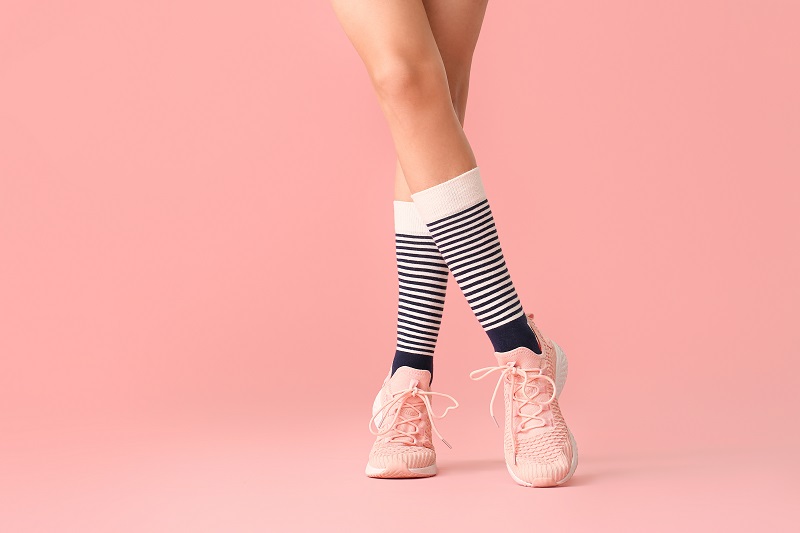
Wrong footwear is a common cause of foot issues. Here are some things to consider when choosing what you wear on your feet:
- Tight, narrow shoes can lead to corns and calluses (thick, painful skin on the toes and heels) and bunions (protrusions of the big toe joint).
- Wearing high heels every day may cause pain and irritation, as well as more serious structural changes to the foot.
- Long-term use of flip-flops can make your foot arch collapse due to a lack of support.
- Wearing dirty shoes and socks can cause unpleasant odor and infections.
Make sure your shoes are the right size, always clean, and comfortable, and that they provide good arch and heel support.
Wear Shoe Inserts if You Have Flat Arches

Made to follow the curve of a healthy foot, shoe inserts provide additional padding and alleviate discomfort in people with flat arches. Using them can feel like a tedious extra step in your dressing routine, but in the long term, they help with the pain and even improve your body posture. You can buy them over the counter or ask your doctor to recommend a particular brand.
Maintain Good Foot Hygiene
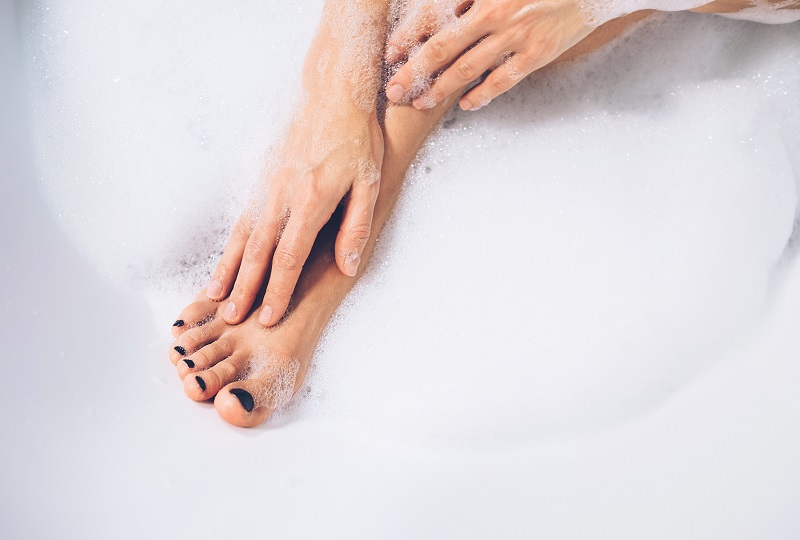
Wash your feet every day with lukewarm water and mild soap. Occasionally, you can pamper them with a good soak in a bowl of warm water, to which you add Epsom salt and a few drops of essential oil (we recommend peppermint or lavender).
The treatment softens the skin and cuticles, making it easy to scrub away loose skin. It also helps relieve pain and improve circulation. However, don’t soak your feet too often because it can dry out the skin.
Thoroughly dry the skin between the toes because leftover moisture can lead to fungal infections.
Moisturize and Massage Your Feet
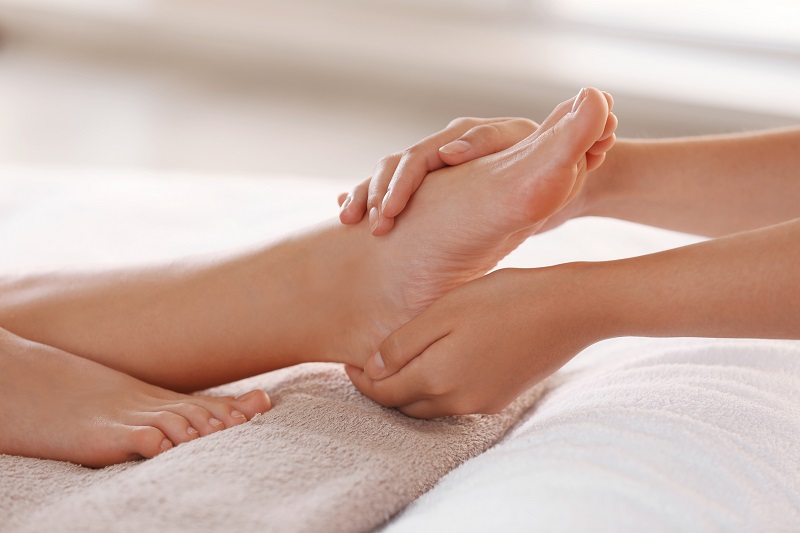
Your feet need pampering as much as the rest of the body. Apply a thick moisturizer in the morning and evening to keep your feet soft and prevent dryness and cracking. Don’t moisturize between the toes to avoid yeast infections.
Regularly Trim Your Nails
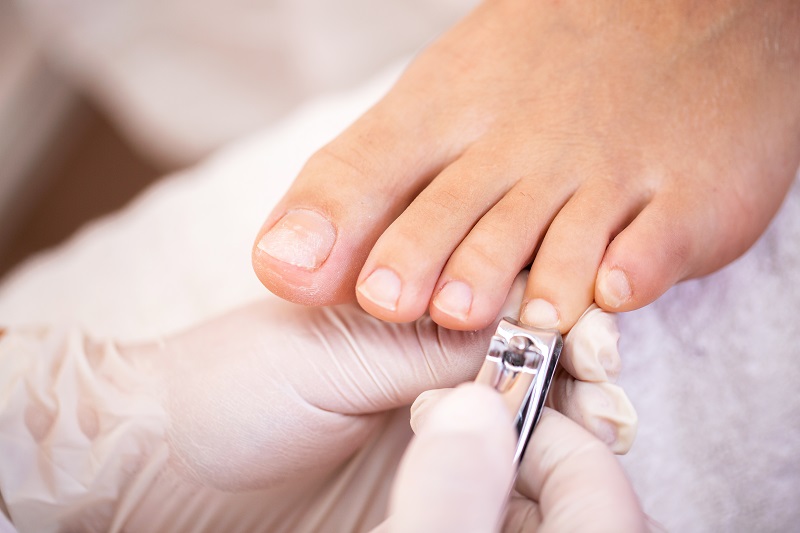
Apart from looking unkempt, overgrown nails harbor dirt and can cause discomfort. Regularly trim them with a nail clipper and buff the corners with a file to ensure they don’t cut into your flesh.
Protect Your Feet from UV Rays
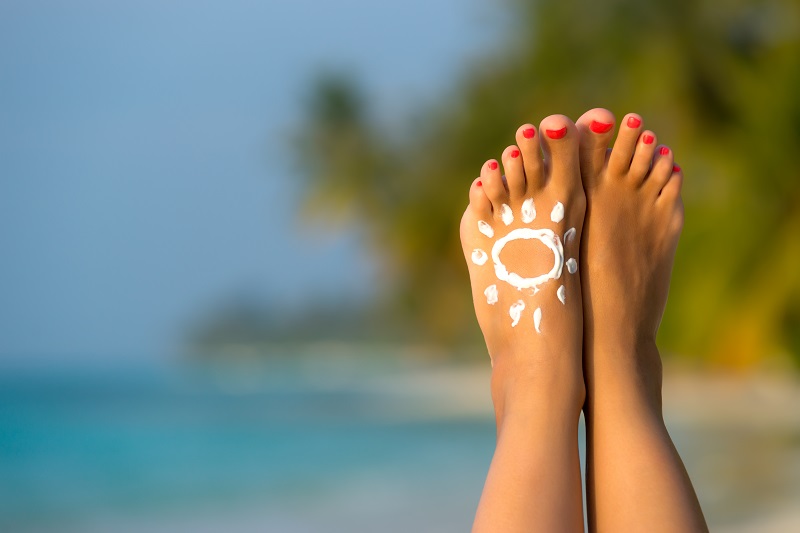
Always apply sunscreen on your feet when they are exposed to the sun. The skin on your feet is sensitive to UV rays and can burn, crack, and age faster due to sun damage. Apply sunscreen on your toenails as well to protect them from the sun and hot sand.
Note: Our article will help you choose a sunscreen that’s just right for you. For broad-spectrum protection, what we always recommend is using Suntegrity Natural Mineral Body Sunscreen.
Don’t Walk Barefoot in Public and Dirty Places
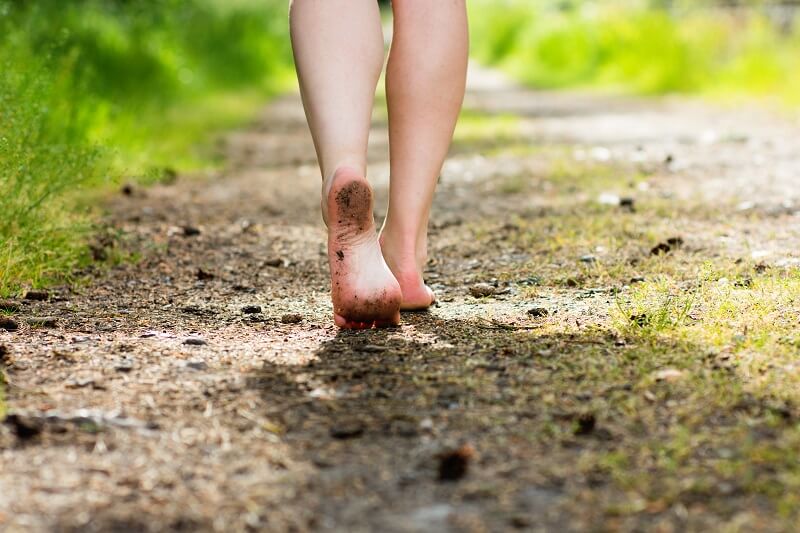
Walking barefoot is generally good for the feet, provided the walking surface is clean and free from pathogens. Otherwise, our feet can contract skin diseases that cause dryness, itching, peeling, inflammation, and blisters. The area around pools is also a source of fungi, viruses, and bacteria, so we advise you always use slippers or flip-flops in the swimming pool area.
When Should You See a Doctor?
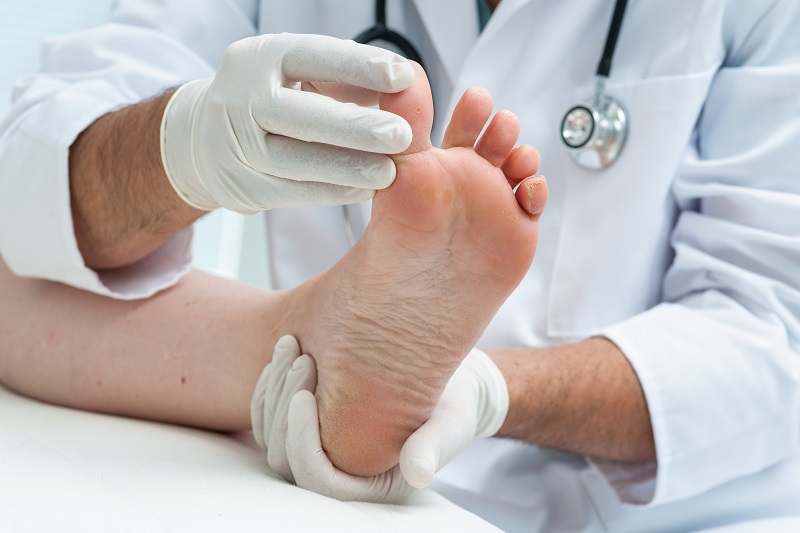
You can prevent and cure many skin conditions on your feet with proper hygiene. However, some conditions require medical help. See your doctor if you have problems with the following.
Warts
Warts are balls of hardened skin on the feet caused by a virus. You are at risk of developing warts if you walk barefoot on a dirty surface or if your feet touch someone else’s warts. Don’t use any OTC medications on your own but seek medical help. Your doctor will assess your condition and recommend removing your warts with a laser, liquid nitrogen, minor surgery, a prescription topical, or an OTC product.
Athlete’s foot
Athlete’s foot is a fungal infection caused by exposing your bare feet to the fungus, which thrives in humid areas. Patients typically experience discomfort, itching, burning, dry skin, scaling, and skin cracking. Your doctor will prescribe topical medication, antifungal pills, or recommend an OTC antifungal product.
Foot ulcers
A foot ulcer is a big open sore on your foot, usually on the toes. It can become infected, filled with pus, and cause pain, swelling, itching, and burning. People with diabetes, poor blood circulation, heart and kidney patients, obese people, smokers, and heavy drinkers are more prone to developing foot ulcers. The treatment usually requires oral or intravenous antibiotics and sometimes surgery to remove the infected tissue.
Calluses
Calluses are areas of thick, hard skin that form at the points where your foot rubs against footwear. With proper hygiene, they often disappear on their own, but in case they persist, contact your doctor. Potential treatments include shaving off the callus, dissolving the callus with salicylic acid, cortisone injections, and even surgery.
Sweaty feet and unpleasant odor
If you can’t control the disagreeable smell and constant sweating of your feet with proper hygiene, see your doctor. They will determine if your condition is linked to stress, hormonal changes, medications, or other health factors. Your doctor may prescribe antiperspirants, Botox injections, and surgery.
Conclusion
People often pay little attention to their feet because they are mostly hidden from sight – until the summer comes. Caring for your feet should be part of your daily routine throughout the year to ensure they remain clean, smooth, and free from skin infections.


